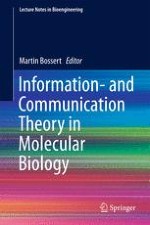2018 | OriginalPaper | Chapter
3. Information Flow in a Mammalian Signal Transduction Pathway
Authors : Manuela Benary, Ilias Nolis, Nils Blüthgen, Alexander Loewer
Published in: Information- and Communication Theory in Molecular Biology
Publisher: Springer International Publishing
Activate our intelligent search to find suitable subject content or patents.
Select sections of text to find matching patents with Artificial Intelligence. powered by
Select sections of text to find additional relevant content using AI-assisted search. powered by
